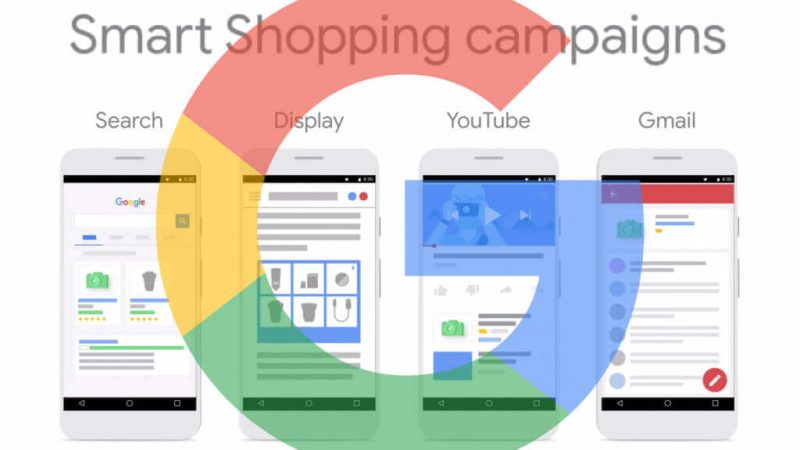Traceloans.com Credit Score: Your Ultimate Guide to Understanding, Checking, and Improving Your Score

Table of Contents
Introduction: Why Your Traceloans.com Credit Score is Your Financial Passport
In today’s society, your credit score is more than simply a number. It is your financial ticket. It is often the deciding factor when buying a home, financing a car, getting a credit card, and in some instances, it may even determine if you secure a job or rent an apartment. If you’ve recently typed, “traceloans.com credit score” into a search engine, you have already taken a crucial first step towards financial.
At Traceloans.com, we believe understanding your credit score is the basis of solid financial health. This guide is designed to expound on everything you will need to know about your credit score. It will explain what a credit score is, why a credit score is important, how you can check your credit score, and more importantly, how you can make your credit score better. Whether you’re establishing credit for the first time or working to rebuild your score after an incident, this article will provide the information and action items you may need.
What Exactly is a Credit Score?
Let’s start with the basics. Your credit score is a three-digit number, often falling between 300 and 850, that reflects your ability to pay back debts. It’s a statistical representation of all the data in your credit reports, which is collected by the 3 major credit bureaus: Equifax, Experian, and TransUnion.
You can think of it as a grade for your financial responsibility. Lenders, landlords, and others use this “grade” to assess whether lending you money or providing you with their service will be risky. Using a very basic model, the lower the score, the higher the risk will be to the lender; and the higher the score, the lower the risk. The lower the risk, the better the chances of favorable loan terms and credit lines.
The Role of Credit Bureaus and Scoring Models
It’s important for people to understand that there isn’t just one credit score. The “traceloans.com credit score” that you access is likely based on one of many scores that are available. The most common are:
FICO® Score: Developed by Fair Isaac Corporation, this is the score that lenders use most often. There are multiple types of FICO scores – different ones for different types of lending (e.g., auto loan, credit card, etc.).
VantageScore®: This is a scoring model created by the three major credit bureaus that was meant to compete with FICO. Like FICO, it uses a similar range, but it uses slightly different weighting.
When accessing your score on Traceloans.com or wherever you find your score, it is very important to know what scoring model is being used. The actual numbers of the score may vary slightly, but they’re all measuring the same exact thing: your reliability as a borrower.
Why Checking Your Traceloans.com Credit Score is Non-Negotiable
Many people choose to ignore their credit score simply out of fear and the misconception that checking it will hurt their score. Unfortunately, this is a huge mistake. Here are the reasons why you should be regularly checking your traceloans.com credit score:
It’s a Soft Inquiry: When you check your own credit score it is considered a “soft inquiry” and it won’t impact your score in any way. You can check it as many times as you want and there will be no negative impact.
Identity Theft Detection: With data breaches happening almost daily, identity theft is a very real threat. If you check your credit score regularly you will be able to spot any unfamiliar accounts or inquiries immediately, often a first sign of fraud.
Discover Errors: Credit bureaus make mistakes. Accounts that are not yours, late payments that are not yours, and errors occur more frequently than you think. The sooner you can find errors and dispute them the sooner your score can increase.
Track Your Improvements: If your goal is to improve your credit score, it is a very powerful motivator to see your score increase. You would be able to identify the financial habits that are helping you and the habits that might be hurting your credit score.
Get Ready for a Big Application: Before applying for a big loan, like a mortgage, you don’t want to be taken off guard by your credit score.
The Five Key Factors That Shape Your Credit Score
Regardless of whether it is a FICO or VantageScore model, traceloans.com uses five main factors to generate your credit score. Understanding these factors is how you will learn to effectively manage your score.
1. Payment History (35% Factor) The Most Important Factor: This shows whether you have paid your previous credit accounts on time. Payment history includes late payments, collection accounts, bankruptcies, and foreclosures all of which can take a serious toll on your score and remain affiliated with your account for 7-10 years.
Pro Tip: Always pay at least the minimum due on time, with no exceptions. The easiest way to ensure you are not late with a payment is to set up autopay.
2. Credit Utilization (30% Impact)
The Second Most Important Factor: This is the amount of credit you’re utilizing in relation to your total available credit. This is assessed per card as well as overall utilization. For example, if you have a credit card with a $1,000 limit and have a balance of $500, you are utilizing 50% on that credit card.
Pro Tip: The rule of thumb with credit utilization is to stay under 30% utilization, and shoot for under 10% utilization for the best score. High utilization illustrates you’re cooking with too much credit.
3. Length of Credit History (15% Impact)
This factor includes the age of your oldest account, age of your newest account, and the average age of all your accounts. A longer history provides more data, along with stability.
Pro Tip: If you don’t use your oldest credit card account, you should still keep it open. If you close it, you’re shortening the average age of your accounts, which decreases your score.
4. Credit Mix (10% Impact)
Lenders prefer to see that you are managing different types of credit. There are two types of credit: revolving credit (like a credit card) and installment loans (like a mortgage, auto loan, or student loan).
Pro Tip: Do not take out debt that you do not need in order to improve your mix. It impacts your score relatively small and eventually a healthy mix will develop naturally.
5. New Credit (10% Impact)
New credit consists of recent account openings, and hard inquiries (when you apply for and seek credit). Having several hard inquiries in a short period can signal lenders that you may be in trouble or taking a risk.
Pro Tip: Space your credit applications apart. When rate shopping on a specific loan (like a mortgage or auto loan), multiple inquiries in a short period (generally 14-45 days) typically only count as 1 inquiry.
How to Check Your Traceloans.com Credit Score for Free
There are many ways to get a look at your credit score without spending a cent:
- Credit Card Companies: A number of major credit card companies (i.e., Discover, American Express, Capital One, Bank of America) are now allowing customers to check their FICO or VantageScores for free as a benfit of being a customer. Look on the website or app associated with your account.
- Loans: A number of auto loan companies and some mortgage loan companies are also providing free score monitoring.
- Free Credit Score Websites: There are a lot of quality sites out there providing free access to your credit score. Traceloans.com offers a simple interface for checking your score while helping you to understand what affects it.
- Non Profit Credit Counselors: If you’re using a non-profit credit counseling agency, they can often help you get their and understand it.
- Keep in mind: You can get a free weekly credit report from AnnualCreditReport.com, but that site doesn’t provide a free score. The methods above are to access the actual score number.
Proven Strategies to Improve Your Traceloans.com Credit Score
When you get a credit score below the number you were expecting, that doesn’t have to mean that the world is falling apart. Your credit repair journey is a marathon, not a sprint. Here are some practical ways that you can improve your traceloans.com credit score.
1. Dispute Errors On Your Credit Reports
Get your free reports from AnnualCreditReport.com and review for errors. If you see an error, dispute it with the credit bureau (Equifax, Experian, TransUnion). The credit bureaus are required by law to investigate and correct verified errors .
2. Lower Your Credit Utilization
This is the easiest way to give your score a quick lift.
- Pay Down Balances: Pay down revolving debt, especially credit cards.
- Request a Credit Limit Increase: If you have a card in good standing, a request for a higher limit can result in an immediate decrease in your utilization ratio (if you don’t increase your spending).
- Make Multiple Payments: Rather than just one payment per month, make payments throughout the month to keep your reported balance lower.
3. Become an Authorized User
If you have family members with a long-standing credit card and excellent payment history, ask if they will add you as an authorized user. Their positive payment experience and high credit limit can be added to your credit file, which can help increase your score. Just remember to ensure the card issuer reports authorized user activity to the bureaus first!
4. Use a Secured Credit Card or Credit-Builder Loan
Whether you have no credit or bad credit, these can be excellent methods for establishing or rebuilding.
- Secured Credit Card: You deposit cash amount with the card issuer, which functions as your line of credit. You use the card just as you would a regular credit card, and they report your activity to the credit bureaus. Over time with consistent, on-time payments, almost all secured cards will allow you to “graduate” to an unsecured credit card, and they will refund your deposit.
- Credit-Builder Loan: If you take out a credit-builder or installment loan with a lender, they will put the loan amount (e.g., $1,000) in a locked savings account until the loan is repaid. You will make fixed monthly payments at a predetermined interest rate until the loan has been paid in full. Once you repay the loan, you will receive the loan amount back in addition to a report going to the credit bureaus showing your history of on-time payments.
5. The “Never Miss a Payment” Mantra
Because payment history is the most significant factor, the single striaght forward thing you can do is to pay every bill on time every time. You may want to consider using payment reminders or automating payments to help do that!
What is a Good Traceloans.com Credit Score?
Although lenders have their criteria, the following is a general scale of credit score ranges:
- 800 – 850: Excellent. You will qualify for the best rates and terms available.
- 740 – 799: Very Good. You will most likely qualify for rates and terms above average compared to others in similar situations.
- 670 – 739: Good. This score is just below average or right at average for the U.S. You will qualify for most loans but might not have the best possible rates.
- 580 – 669: Fair. This is also called subprime credit. There is no guarantee you will qualify and if you are approved, you will have higher interest rates than someone with better credit.
- 300 – 579: Poor. It is very difficult if not impossible to qualify for new credit. You will want to explore any credit building strategies you can.
Conclusion: Your Journey to a Better Score Starts Now
Your traceloans.com credit score is a moving number widely recognized as a reflection of your financial habits. The important part to remember is that your credit score is not permanent. To help combat this, the following continues to provide a framework for you to keep in mind when trying to leverage your credit score—payment history, credit utilization, the length of history, credit mix, and new credit. Knowing the factors that influence your credit score is one way to take action.
It all begins with a credit score review. Are you ready to take the first step in achieving an awesome credit score? From this review, you can develop a plan that is unique to you, dispute inaccuracies, minimize your utilization, and establish a positive payment history.
Are you ready? [Click Traceloans.com now to access your free credit score, plus personalized tools and resources to help you achieve your financial goals.] (this is a sample Call to Action- you will want to link it your score checking service).






